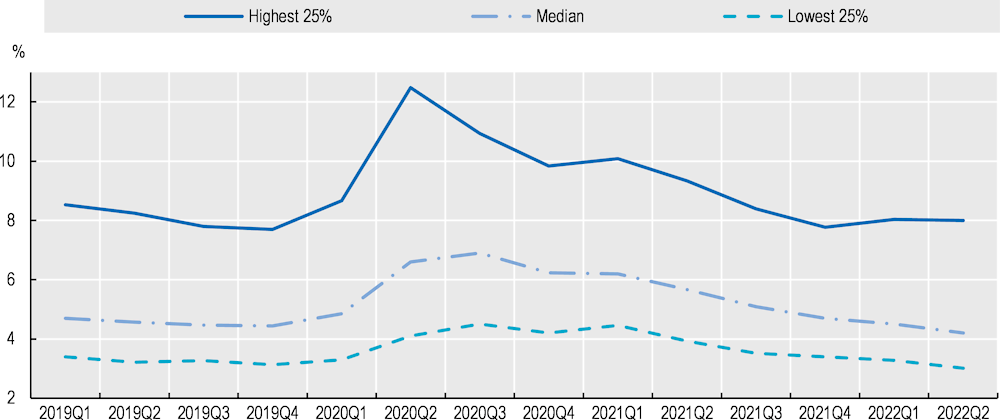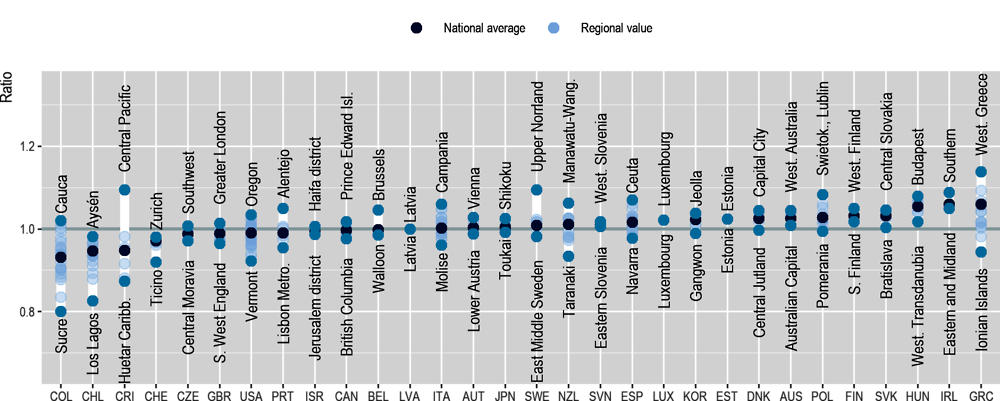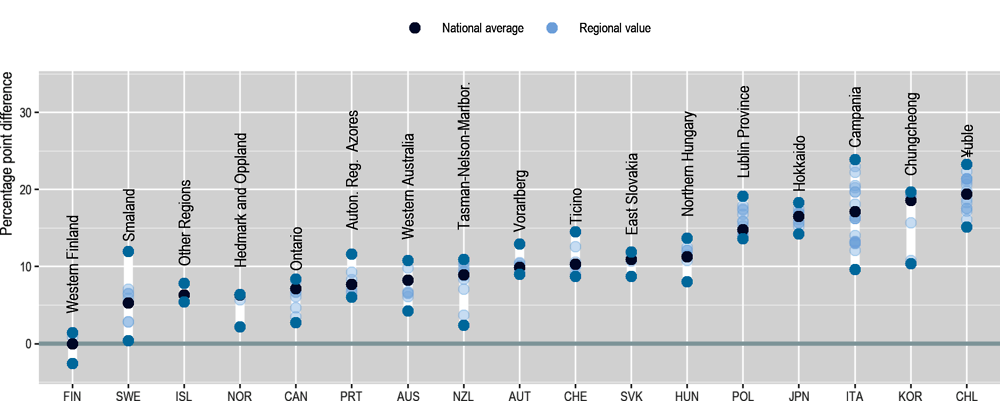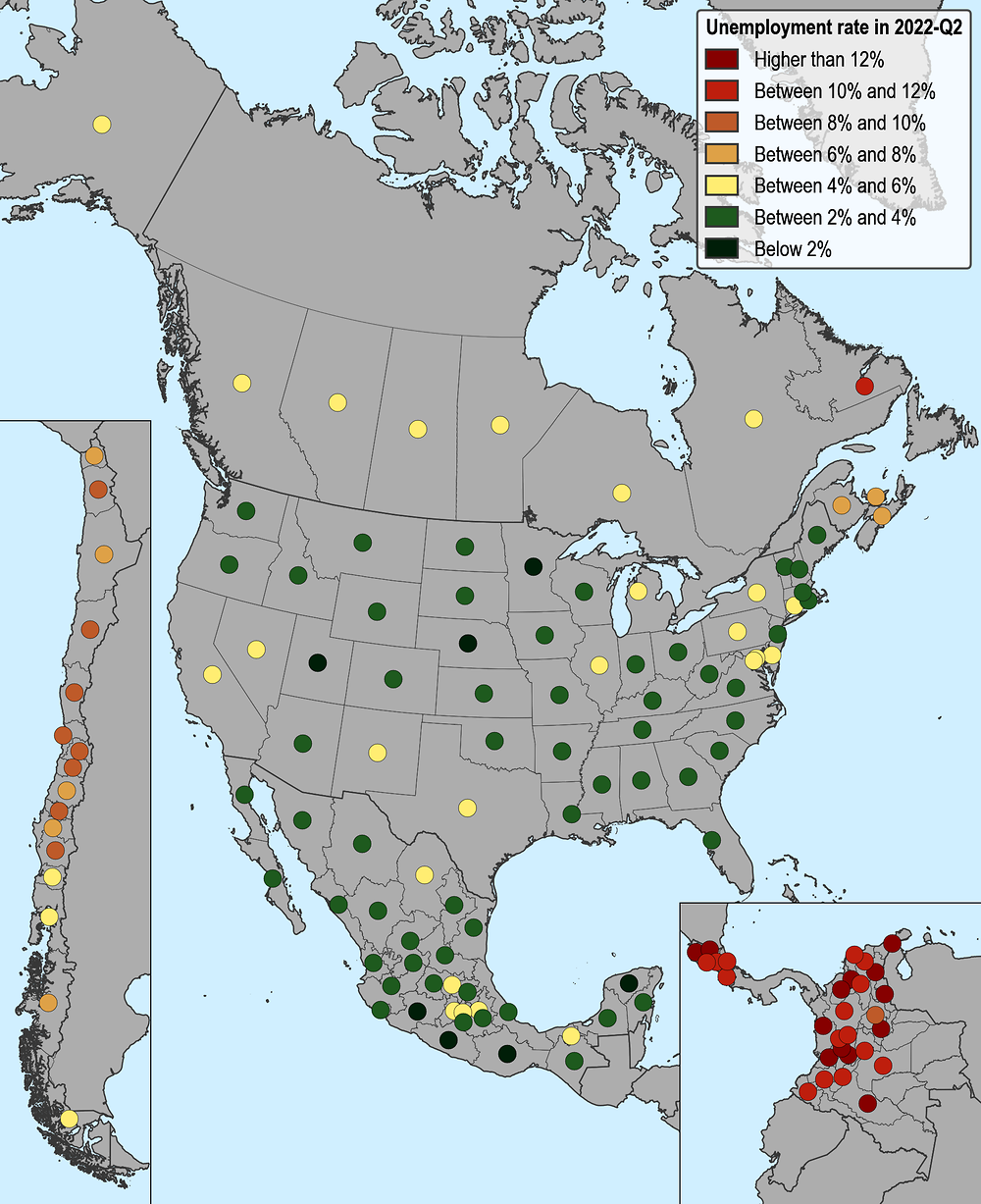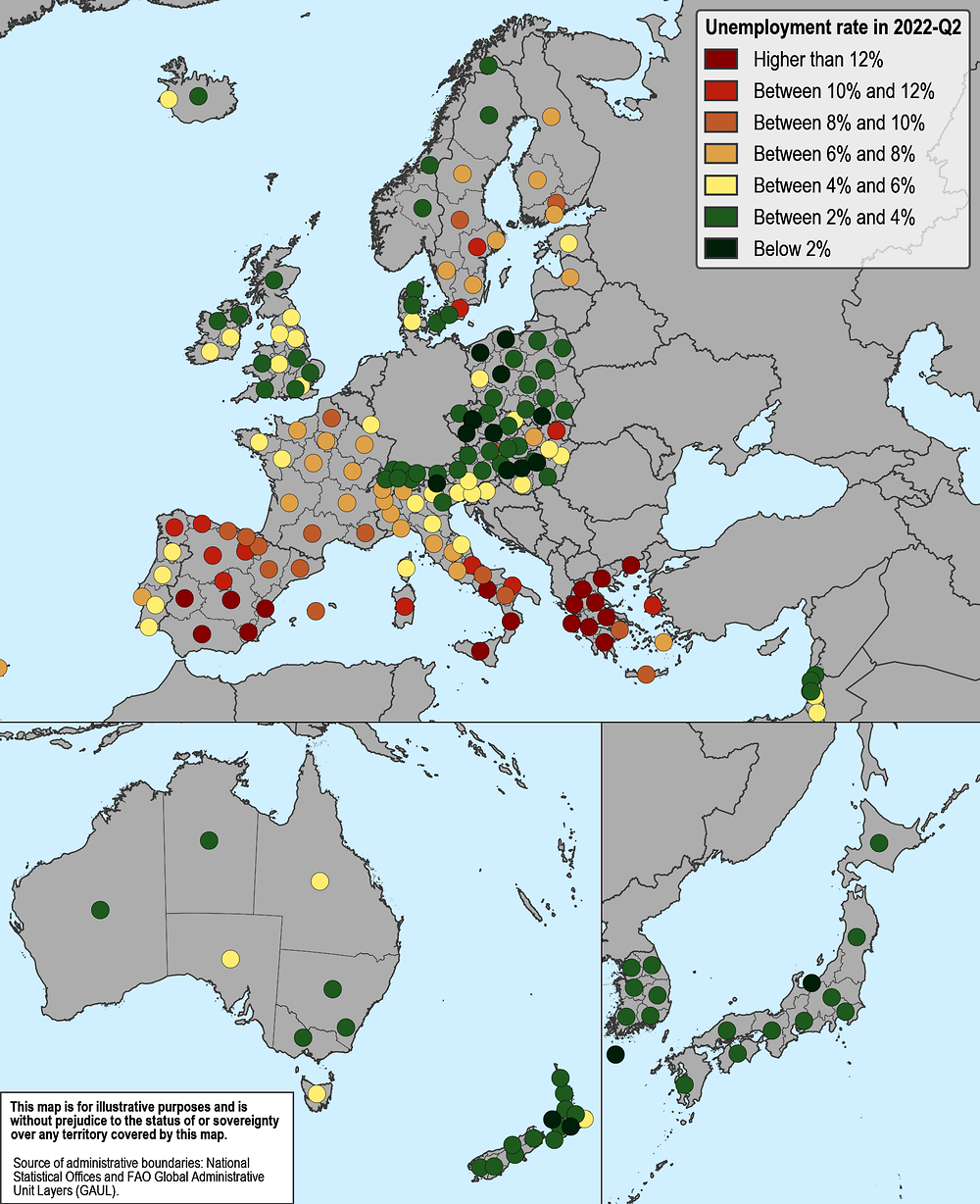Unemployment rates rose in nearly all OECD regions in the wake of the COVID-19 pandemic and containment measures but, as restrictions were relaxed in many places, employment started recovering. By early 2022, nearly half of regions had rebounded to pre-crisis levels. However, gender and age disparities in employment remain wide in most regions.
The COVID-19 pandemic and related containment measures led to substantial falls in employment and rises in unemployment rates in nearly all OECD countries and regions in 2020, even in countries that initially managed to contain the number of infections. The median unemployment rate across regions rose by more than 2 percentage points (pp) in the initial phase of the pandemic, from late 2019 to the middle of 2020 (Figure 1.1). The median decline in labour force participation exceeded 2 pp across regions during the initial phase of the pandemic. Even in the least-affected regions (lowest 25% of employment rates in mid-2020), unemployment rates rose by 1 pp while unemployment rates in the most-affected regions (highest 25% in mid-2020) rose by more than 5 pp. Because the rise in unemployment was greater for regions with high (8% or higher) pre-pandemic unemployment rates, regional disparities in unemployment increased. This was not the case when comparing across countries: for example, some of the countries with high pre-pandemic unemployment rates had relatively small unemployment changes in 2020 (e.g. Greece and Italy) while others had very large increases in 2020 (e.g. Colombia and Costa Rica), also reflecting differences in the statistical treatment of furloughed workers (Arnaud, 2021).
Indeed, labour survey data in many countries do not capture the full extent of disruption to employment because most OECD countries provided unprecedented job retention schemes for the pandemic (OECD, 2020). At the peak of the crisis, job retention schemes in OECD countries provided support to roughly 20% of workers who were employed before the pandemic started; support measures have receded substantially since then (OECD, 2021a).
Two years after the peak in unemployment rates, many regions still experienced shortfalls in employment relative to pre-pandemic. As of Q2 2022, employment rates had recovered in nearly half of OECD regions (based on 33 OECD countries), where recovery is defined as employment rates equal to or above pre-pandemic rates. The majority of countries have a mix of regions that have recovered and those that have not (Figure 1.2). Within countries, Chile, Colombia and Costa Rica had the widest range of outcomes across regions. Greece also had widely disparate outcomes, with some regions achieving more-than-complete recovery (e.g. Western Greece) and others with substantial shortfalls in employment rates relative to pre-pandemic (e.g. tourist-exposed regions such as the Ionian Islands).
Although many countries had high rates of COVID-19 in early 2022, the economic recovery has continued and the OECD-wide unemployment rate recently reached 5%, better than its pre-pandemic average (OECD, 2022). While youth unemployment spiked in 2020, over the last two years, it has nearly returned to its pre-pandemic levels. Youth unemployment typically rises more than overall unemployment in downturns and falls more in recovery periods (An, Bluedorn and Ciminelli, 2022) and in this case, a third of OECD countries implemented subsidies to encourage employers to hire young people during the COVID-19 crisis (OECD, 2021b).
Nevertheless, women and youth continue to have substantially lower employment rates than other demographic groups in nearly all OECD regions. Excluding Finland, where female and male employment rates are similar, in all other regions the gap is greater than 3 pp and the median gap between male and female employment rates is 12 pp (Figure 1.3). In most OECD regions, differences in labour force participation account for a sizeable portion of the gender gap in employment. This gender gap is not necessarily reflected in unemployment rates because many women report being out of the labour force – neither working nor unemployed. While additional childcare burdens for parents during the COVID-19 pandemic held down female labour force participation in many OECD countries (Djankov and Zhang, 2020), the gap between female and male employment actually narrowed in 2019-21 in approximately half of regions (and 60% of the 28 OECD countries) with available data.
In all 60 regions (of the 7 OECD countries with regional data), youth unemployment rates are higher than those of other working-age adults; in 2021, the median gap was 11 pp across OECD regions. Within countries, the difference between youth and overall unemployment is generally larger in regions with higher overall unemployment rates. In Hungary, overall unemployment rates range from below 2% to 6% across regions while the lowest regional youth unemployment rate is 8% (Budapest, 2% overall) and the highest is 14% (Northern Hungary, 6% overall). During business cycle downturns, young people appear to face greater disadvantages relative to older, experienced workers – especially in weak local labour markets.

